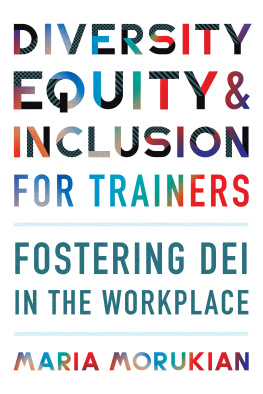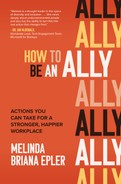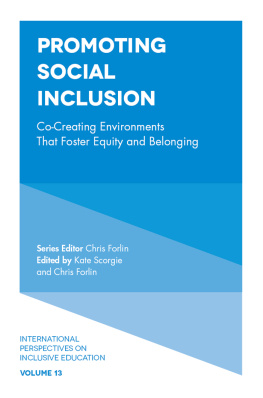Contents
Guide
Pages

2022 ASTD DBA the Association for Talent Development (ATD)
All rights reserved. Printed in the United States of America.
24 23 22 21 1 2 3 4 5
No part of this publication may be reproduced, distributed, or transmitted in any form or by any means, including photocopying, recording, information storage and retrieval systems, or other electronic or mechanical methods, without the prior written permission of the publisher, except in the case of brief quotations embodied in critical reviews and certain other noncommercial uses permitted by copyright law. For permission requests, please go to copyright.com, or contact Copyright Clearance Center (CCC), 222 Rosewood Drive, Danvers, MA 01923 (telephone: 978.750.8400; fax: 978.646.8600).
ATD Press is an internationally renowned source of insightful and practical information on talent development, training, and professional development.
ATD Press
1640 King Street
Alexandria, VA 22314 USA
Ordering information: Books published by ATD Press can be purchased by visiting ATDs website at td.org/books or by calling 800.628.2783 or 703.683.8100.
Library of Congress Control Number: 2021948271
ISBN-10: 1-953946-05-4
ISBN-13: 978-1-953946-05-8
e-ISBN: 978-1-953946-06-5
ATD Press Editorial Staff
Director: Sarah Halgas
Manager: Melissa Jones
Content Manager, L&D: Eliza Blanchard
Developmental Editor: Kathryn Stafford
Production Editor: Hannah Sternberg
Text Design: Shirley E.M. Raybuck
Cover Design: FaceOut Studio
Printed by BR Printers, San Jose, CA
Dedication
For my future peace teachers, Rosalie and Lilia, and my past peace teachers, Joni and Val. From one generation to the next, you inspire me every day to make the world a little bit better than I found it.
Introduction
If there was ever an example of the adage, looks can be deceiving, my father was it.
Varujan Val Morukian was short in stature with thinning gray hair, wire-framed glasses, and a creased olive-skinned face that looked vaguely ethnic to most people in the suburban Detroit neighborhood where I grew up. He walked around with a friendly smile and a vague look in his eyes. He was hard of hearing, and between that and his foreign accent people often assumed he didnt understand them or was not all there.
The truth was that my father was paying very close attention to everything. His intellect was sharp. His curiosity was endless. His life story could have been a script for an epic movie. What people saw was by no means representative of the courageous, complex human underneath.
My family were Armenians who were forced to flee Turkey in the 1920s. As refugees they settled in Cuba, where my father was born. He was raised by an incredible, resilient single mother and two older sisters. In Havana he often sat in the plaza with the old-timers while they played dominos and spun stories. He visited with Blanca, an old Afro-Cuban woman who practiced Santeria. She was feared by the other neighborhood kids as a bruja (witch) but was loved by my father. After coming to the US, he served in the army as a sniper in the Korean War, earning the Bronze Star for his valor. He worked as a bartender and a bowling alley attendant, and on one eventful night he stood in as a security guard for Jimmy Hoffa. He earned a graduate degree from the University of Michigan. He became a history teacher and changed the lives of thousands of struggling teenagers in Detroit public schools over his 30-plus-year career.
My father was an endless learner. He was continually curious about other people and saw beyond immediate impressions, finding something to admire about everyone. He showed genuine interest and compassion for everyone equally. In return, people were their best selves with him. Struggling students improved. Neighbors flocked to our house when they needed a coffee and confidential conversation. Grocery store clerks, waitstaff at restaurants, and auto mechanics greeted him by name with bright smiles, handshakes, and hugs. I learned from him that when we treat others with dignity and warmth, they typically respond in kind.
Why Diversity, Equity, and Inclusion?
Throughout my career, I have been drawn to exploring how our unique identities influence our work and personal lives, and how diverse combinations of people contribute to organizational success. I have also seen the corrosive effect of inequality and systemic oppression on organizations and society as a whole.
As a trainer and facilitator, my work has led me to believe deeply in the importance of challenging people to look at the world from various perspectives, not only to build connections with others but also to gain wisdom. As an organization development practitioner, I have learned that change only happens when DEI becomes a core part of the organizational structure and culture, when it is recognized by all as critical to the organizations sustainability.
Why This Book?
Diversity, equity, and inclusion work is incredibly complex. There is not a clear and well-worn path to follow for those who want to learn. Unlike more technical professions, DEI feels more amorphous. Many people in the space of DEI have had to forge their own way, learning as they went. Although there are now benchmarks for DEI success and best practices to follow, the field is continuing to evolve, and there is no centralized certifying body for DEI to ensure that practitioners have a shared set of skills and knowledge.
Our society is also at a turning point that demands individuals and institutions focus on DEI as an imperative for sustainability. Our population is more demographically diverse than ever, and social polarization has continued to push people into identity-based camps that foster distrust, disregard, and hatred.
I began outlining this book in early 2020, when the COVID-19 pandemic had just begun. While writing the book, I witnessed the aftermath of the murders of George Floyd, Ahmaud Arbery, Breonna Taylor, and countless others. Many White people started to wake up to the everyday oppression and terror that Black people experience. Marches and protests supporting Black Lives Matter took place all across the US and around the world. Books like Ibram X. Kendis How to Be an Antiracist and Robin DiAngelos White Fragility flew off the shelves as folks grappled (many for the first time) with the truths of White supremacy and racism in the US. Requests for DEI training and consulting surged. The year 2020 really pushed the E piece into high gear and prompted organizations to take a more serious look at themselves and what gaps they had in terms of diversity, equity, and inclusion. Many of the leaders I have encountered in the last year have had a wake-up call and realized they have to prioritize DEI in a more systemic way than just a one-off workshop. Employees voices have grown louder, as have the voices of consumers, pushing leaders to engage in more genuine efforts to address systemic inequalities.
This awakening has been both encouraging and frustrating to many veterans of DEI work. On the one hand it brought a renewed energy and focus, with more of an invitation to engage in uncomfortable conversations around identity and inequality than has been tolerated in the past. However, it has also been frustrating for three reasons:









